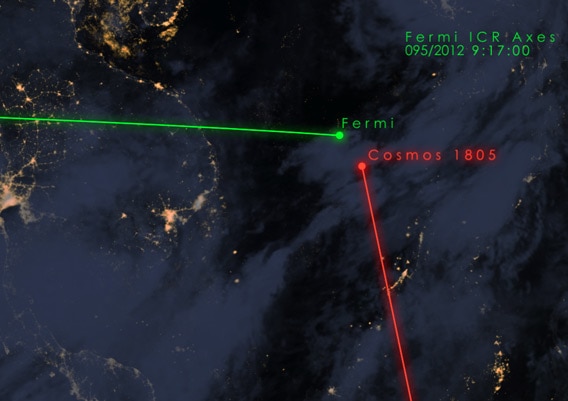Create a free profile to get unlimited access to exclusive videos, sweepstakes, and more!
Collision Course! How A Cold War SpySat Nearly Took Out a NASA Observatory

Fermi is a NASA astronomical observatory orbiting the Earth about 560 kilometers (350 miles) above the surface. This is called low-Earth orbit, and is very popular; a lot of satellites are at roughly the same altitude. However, space is big, and satellites small, so a collision is very, very rare.
But not impossible. And it turns out that in April 2012, Fermi nearly had a very disastrous blind date with Cosmos 1805, an old Soviet spysat. NASA just put out a video describing the tense week after the discovery was made that the two satellites were on a collision course.
A lot of that story amazes me. First, that I didnât hear about this when it happened! I used to work on Fermi before it launched (when it was still called GLAST) and I try to keep up with it. I guess that since the disaster was avoided, it wasnât that big a dealâ¦afterwards.
Second, the part where they say the two objects would come within 30 milliseconds of each other made my neck hair stand on end. Fermi orbits the Earth at about 8 km/sec, so in 0.03 seconds it travels about 250 metersâ800 feet or so. Fermi is a cube about three meters on a side (not counting the solar arrays, which stick out), so itâs small compared to that distance. But itâs hard to get perfect predictions of orbital positions, especially several days in advance, and 250 meters is a very, very close shave.
Mind you, the Soviet spy satellite was on an orbit perpendicular to Fermiâs. The math works out that the collision speed would be about the square root of two (about 1.4) times Fermiâs orbital speed, or roughly 11 km/sec (27,000 mph). At that speed, both satellites wouldâve been wiped out. To say the least. The explosion wouldâve been pretty big, and would have created a hazard for other satellites in similar orbits for years to come.
Amazingly, a short one-second burn of the thrusters on Fermi was enough to prevent collision. Because the possible collision was still days in the future, the velocity of Fermi didnât need to change much to prevent it. Even one centimeter per second change in speed (say) changes Fermi's position by nearly a kilometer over just a single day, so over a few days even a small kick can be enough to avoid a massive, and disastrous, collision.
Also, once the burn was done, Fermi was back in operation in an hour. Thatâs pretty cool. Its mission is to continuously scan the sky, looking for high-energy gamma rays that come from black holes, exploding stars, and other mind-bogglingly violent events. Iâm glad that its own potentially violent demise didnât distract it from its duty for very long.
Iâm also glad there are so many talented and dedicated people watching out for space collisions. We launch more material into space all the time, and this job will only get more important in the future.














